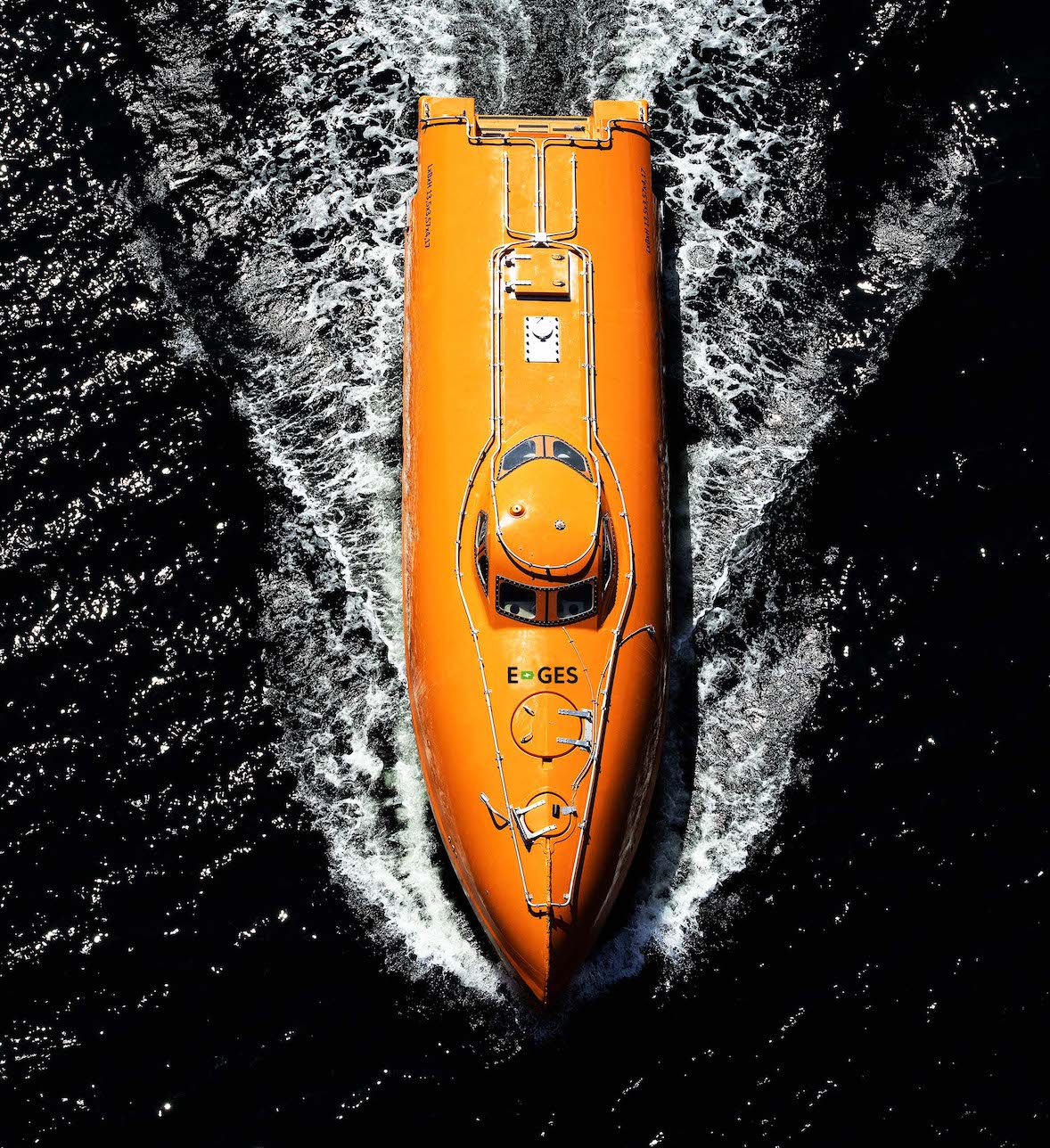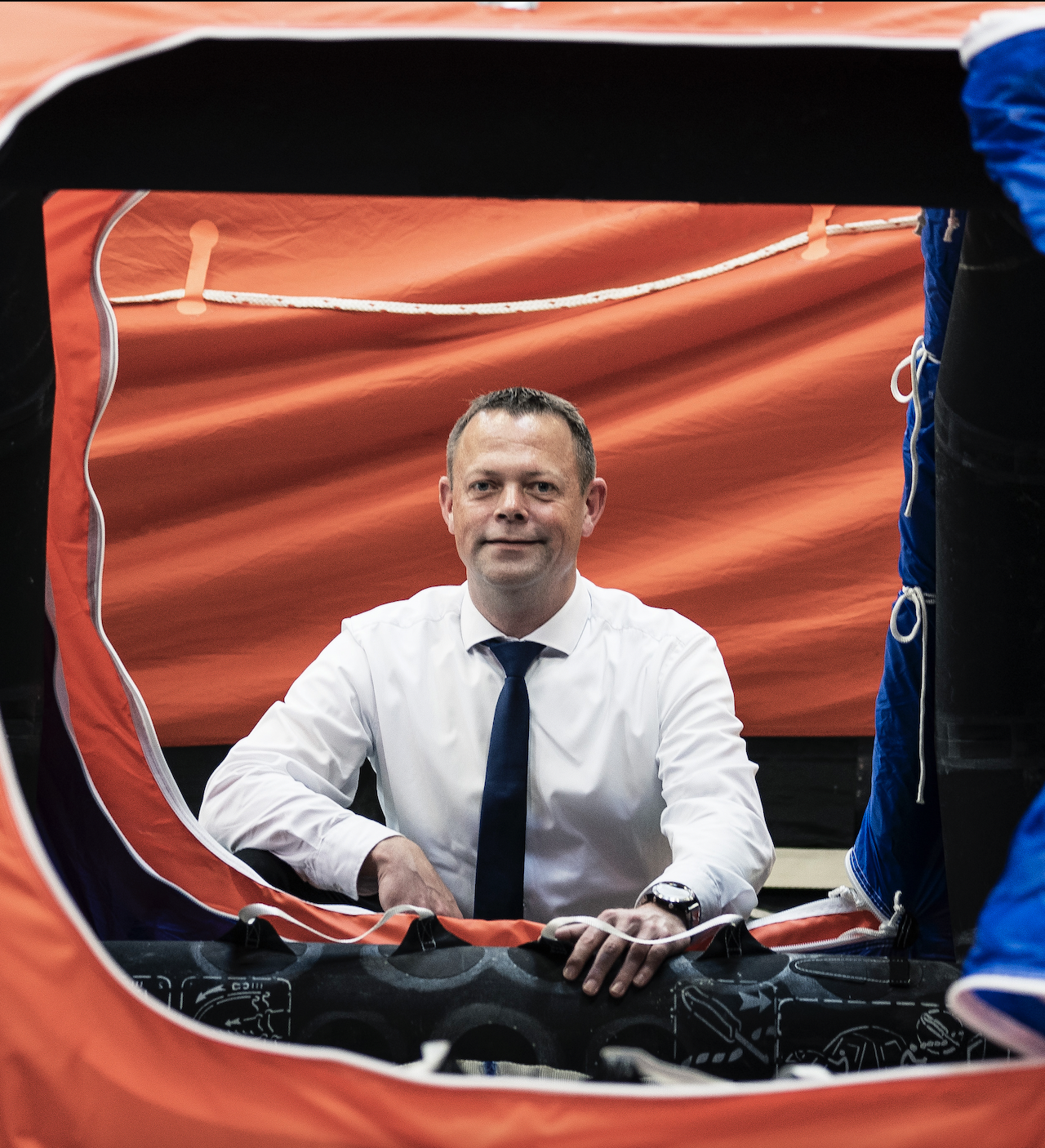
'The goal is a systematic integration of sustainability into our entire business'
Viking Life-Saving Equipment
Since 1960, VIKING Life-Saving Equipment has produced safety equipment for the maritime and offshore industries. Today, the company has embarked on the next steps in its sustainable transformation.
Liferafts and boats, evacuation systems, lifejackets and vests, workwear, and firefighting equipment. For more than 60 years, the Danish company VIKING has ensured that people can feel safe at sea. Today, the company has reached nearly 3,000 employees across 8 production sites and more than 80 offices around the world. VIKING has become a global player in a global industry – and now with a clear strategy for sustainability, according to Vice President Tim Engell Pedersen:
“It goes without saying that quality and safety have always been our top priorities in VIKING, due to the simple fact that our customers are at sea when they are using our products. In addition to this, we’ve focused a great deal on green certifications. In 2021, however, we made a far-reaching decision to focus even more on sustainability in all our processes. In our coming business plan, sustainability is a key criteria that we will consider in all significant decisions, regardless of whether they involve production, facilities, choice of materials or any other part of our value chain.”
Initiating such a major change in an established company requires a strong will to succeed, according to Tim Engell Pedersen:
“For some, sustainability is about changing a process or a product, but for us it’s about applying a systematic approach to cover our entire organization. We are now in the process of assessing our complete value chain, all our areas of activity and our entire product life cycle from cradle to grave. It takes a carefully considered strategy and a detailed roadmap to ensure progress, but we are determined to make it happen.”

Breaking new ground
In addition to focusing on existing initiatives, such as reducing the carbon footprint throughout the production, Tim Engell Pedersen and the rest of VIKING’s top management team are aware that the company has to break new ground:
“When it comes to improving materials and production processes, we are already well underway with a large number of initiatives. However, we must also look more broadly and innovatively at sustainability. For example, many of our products can easily be included in circular value chains. These are some of the ideas that we are now evaluating against each other to see where we can make an impact that matters.”
Although many ideas are still on the drawing board, Tim Engell Pedersen is happy to reveal some of the initiatives that have already been launched by VIKING:
“Today, for example, we are considering the use of solar cells and green solutions whenever we expand or renovate our buildings, most recently in Dubai and Thailand. We have also developed and delivered the first lifeboats that are 100 % battery-powered and complete with their own fire extinguishing system. In addition, we run experiments with recycling of fiberglass and steel, and we work with green materials, waste management and weight reduction, as lighter products save fuel on the ships. Whenever we create real and noticeable results, we see that it increases the motivation among our employees.”

Validated data
Like many other companies, VIKING aims to not only reduce its carbon footprint, but also to document the reduction, which in itself is a huge task for a global company with thousands of sub-processes, according to Tim Engell Pedersen:
“From the start, we said that we want to approach sustainability in a systematic and structured way, which means that we want to have a validated baseline based on international standards, both in terms of our own processes and our subcontractors’ processes, going all the way from raw materials, production, transportation and installation to service and after-life. This is a massive task that affects all parts of our organization, but it’s a crucial milestone. Only a validated baseline will allow us to assess the true impact of the decisions we make every day.”
Reaching such a milestone was also the reason why VIKING became part of the UNDP SDG Accelerator programme with UNDP, Danske Maritime, and Rainmaking, according to Tim Engell Pedersen:
”For us, it’s a win-win situation when the UNDP collaborates with private companies to solve the world’s most pressing challenges, and it’s a collaboration that has sharpened our focus on sustainable solutions and the methods for assessing sustainability. In addition to improving our learning curve, we now have a fantastic network to lean on, and we have been inspired on so many levels to raise the bar. Today, we have the will, the knowledge, and the organizational capacity to work systematically with sustainability. We’re on the right track!”
Read more about VIKING Life-saving Equipment here.
SDG 12.5
VIKING Life-saving Equipment aims to substantially reduce waste generation, thereby contributing to responsible consumption and production.
By 2030
VIKING Life-saving Equipment aims to substantially reduce waste generation through prevention, reduction, recycling and reuse.
Solution
VIKING Life-saving Equipment has initiated a comprehensive transformation to integrate sustainability into all of the company’s products and processes.
Furthermore...
VIKING Life-saving Equipment is simultaneously experimenting with green materials, green product improvements and green energy solutions in its production.
Founded 1960
VIKING Life-saving Equipment has approximately 3,000 employees, 3 training academies, and 80 sales offices worldwide.
Location
VIKING Life-saving Equipment has its headquarters in Esbjerg, Denmark, but also 8 production sites in other locations.

 Locations
Locations